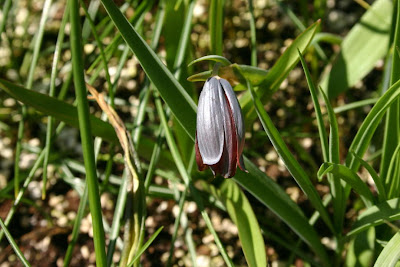
Decades ago I planted three tiny Magnolia stellata between the sidewalk and the street. Now they form what one of the neighbors has called "the hedge" in front of our house.
The three are in full bloom now, freely scenting the air with their potent fragrance. On a warm, moist day the fragrance carries on the air freely. Passers-by frequently stop to enjoy the fragrance (and occasionally to snitch a bloom; that's fine with me).
When these were planted they were little better than eighteen-inch sticks. Two of the neighborhood boys took delight in riding their tricycles into them. A few years ago, I answered a knock on the door, and there was one of those boys - now a young man. He asked me if I remembered him: I sure did! I didn't tell him I remembered his tricycle, too.
The image I've used here is from 2007; it shows the trees with the masses of Helleborus foetidus which grow under them. This is a favorite combination.

















